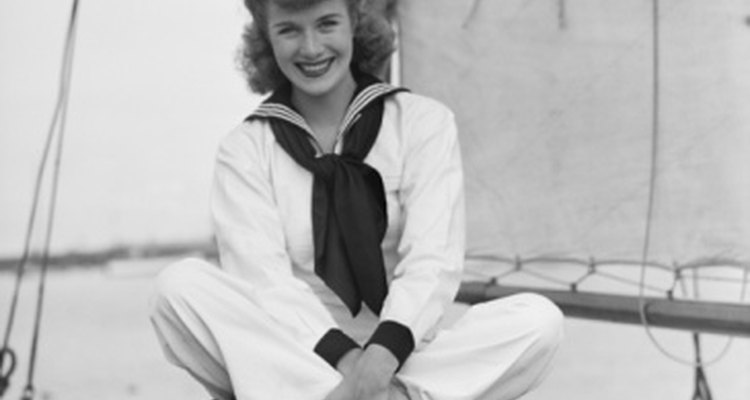
In the 1940s many entertainers lent their services to the USO (United Services Organization). Lana Turner, Lena Horne and Rita Hayworth were just some of the sirens and song birds who graced the USO camps to charm the troops. The USO costumes held to the aesthetics of the time, conforming to the “rationing” mindset of World War II, while glamorizing the uniforms and patriotic garb donned by the men and women who served their country.
The World War II Affect on Costumes
The World War II era was one of cutting back: Nylons for stockings and materials for girdles were used to produce military materials rather than ladies' wear. Shoe rationing was another example of the severity levels, as women in the United States were allowed only three pairs of shoes. In Britain, women were allowed one, as stated in Edmund Lindop's book “America in the 1940s.” USO costumes worn to entertain the troops were equally as minimalistic. There was very little of the extravagance, feathering or beading worn in Hollywood. Rather, entertainers opted for a simpler wardrobe that added sex appeal and glamor to the uniforms of the armed forces.
Army-Influenced Costumes
In 1945 Lana Turner was one of many women to help put feminine army costumes on the map with her movie “Keep Your Powder Dry.” In the movie, Turner is a rich girl who joins the armed forces, and like many women in the armed forces, she wore military garb. The tan uniform of an army official was translated by Hollywood and entertainers as a slightly more sexy, form-fitting costume to entertain the USO troops. Some singers crooned while dressed in the uniform-inspired khaki shirts and matching pencil skirts. This costume was often topped with the coordinating angular army hat.
Navy-Like Garments
Nautical themes were also prevalent in USO costumes. Navy blue and white stripes graced simple shift-like frocks that buttoned down the center. Some dresses were also accented with the sailor’s collar — a square collar that lies flat across the back, while tying in a knot in the front. Capped sleeves were often integrated into this costume, in conjunction with a hemline hovering right above the knee as depicted in Amy Peterson and Ann Kellogg’s book “The Greenwood Encyclopedia of Clothing Through American History 1900 to the Present, Volume 1." This costume was sometimes accented with a white sailor’s hat.
Pin-Up Girl Look
The 1940s pin-up girl, a scantily glad vixen, existed before the decade but was given a heightened amount of visibility in the 1940s, according to Robert Sickles’ book “The 1940s.” Many soldiers would hang pictures or decorate barracks with these images, and thus a cultural icon was born. The pin-up girl’s costume is commonly associated with USO costumes because it was a sex symbol of the time. Furthermore, many Hollywood actresses, such as Betty Grable, Susan Hayward and Carmen Miranda, all had sexy, but tasteful, pictures in circulation.
The pin-up girl costume of that time was usually a one- or two-piece bathing suit or short, form-fitting dress that was decked out in patriotic colors. In many pictures the women wore popular hairstyles of the time, one of the most common being the “victory wings,” which was hair formed into two large rolls on either side of the head.
Related Articles

Clothes Worn in the Seventies

Clothing Ideas for a 1970s-Themed Party
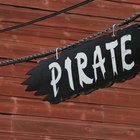
What Do Women Pirates Wear?

Hat Trends of the Seventies
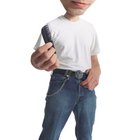
What Did Men Wear in the '50s?

Hispanic Clothing History

What Would a Girl Wear to a "Miami ...
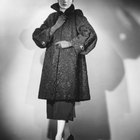
1958 Men's and Women's Dress Styles
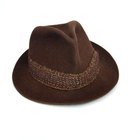
1950s Gangster Clothes

What Teenagers Wore in the 1940s

School Clothes in the 1900s

How to Make Gibson-Girl Hairdos

Beards of the 70s
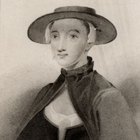
Women's Hats in the 1700s
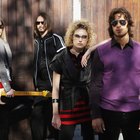
Fashion for Teen Men of the '90s

What Did Men Wear During the ...

French Fashion of the 80s
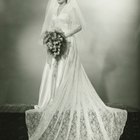
Wedding Dresses of the 1920s, 1930s & ...

What Did Kids Wear in the 80s?

Toga Party Song List
References
- “America in the 1940s”; Edmund Lindop; 2005
- “The History of the 1940s”; Rennay Craats; 2001
- “Pin-up Grrrls: Feminism, Sexuality, Popular Culture”; Maria Elena Buszek; 2006
- “The Greenwood Encyclopedia of Clothing Through American History 1900 to the Present , Volume 1”; Amy T. Peterson, et al.; 2008
- “The 1940s”; Robert Sickels; 2004
Writer Bio
B. Maté has been reporting on creative industries since 2007—covering everything from Fashion Week to the latest artist to wow the Parisian art scene. Her experience stems from a marketing background, with more than 12 years of experience consulting fashion-forward entrepreneurs.
Photo Credits
George Marks/Retrofile/Getty Images